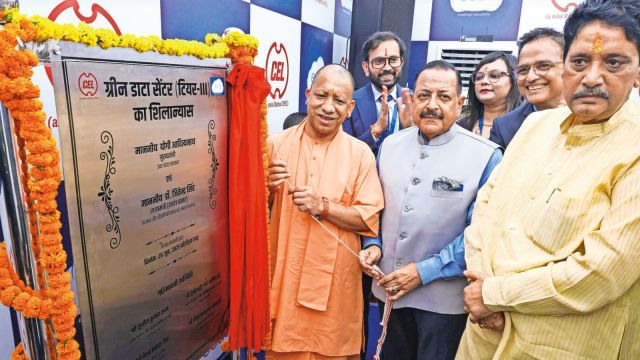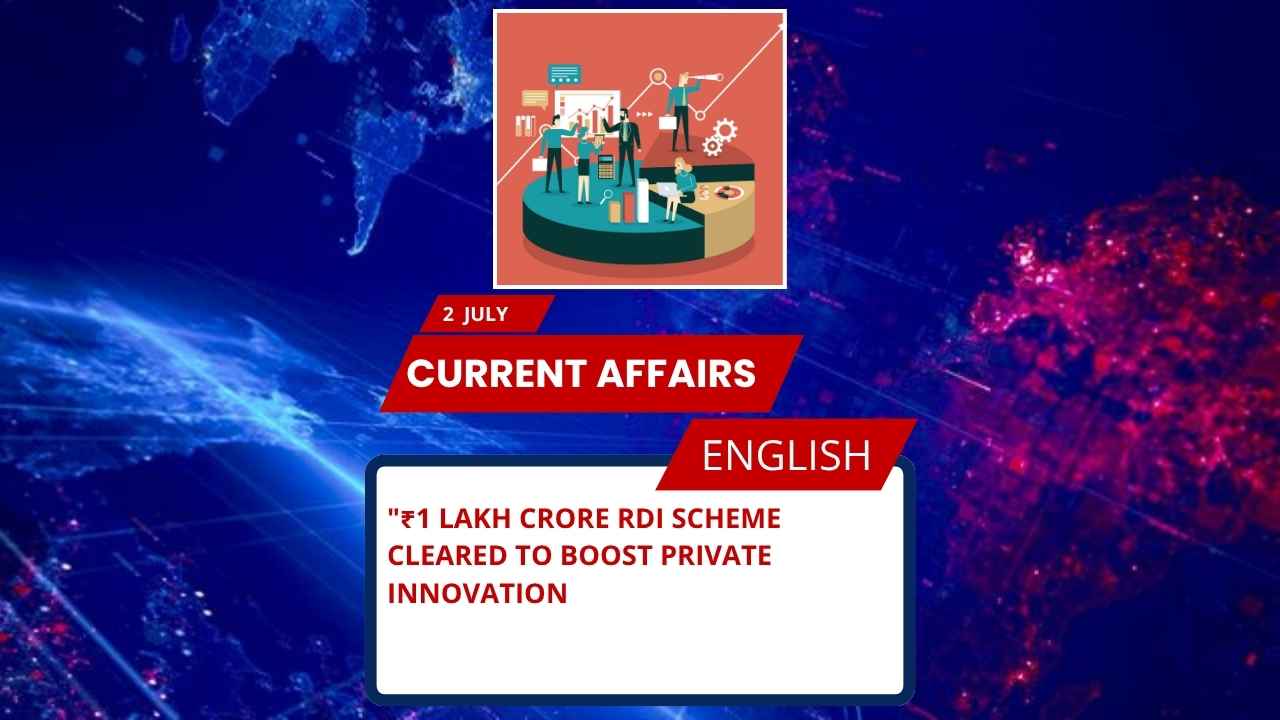
Key Points for SSC, UPSC & Other Government Exams:
- India’s first green data centre is coming up in Sahibabad, Ghaziabad (Uttar Pradesh).
- Laid by CM Yogi Adityanath and Union Minister Jitendra Singh.
- Being developed by Central Electronics Limited (CEL) in partnership with ESDS.
- The data centre will support 30 MW capacity with modular and eco-friendly features.
- India’s first solar photovoltaic module was made by CEL in 1974.
- A 200 MW solar module project MoU signed between CEL and Multi Infra.
- India’s first quantum unit to come up in Noida, Biotech park near Lucknow.
- CEL is a Mini Ratna PSU under the Ministry of Science & Technology.
- The Green Data Centre will have smart cooling, reflective roofing, rainwater harvesting, and multi-ISP support.
About Uttar Pradesh (as per exam relevance):
- Capital: Lucknow
- Chief Minister: Yogi Adityanath
- Governor: Anandiben Patel
- Major Rivers: Ganga, Yamuna, Gomti, Ghaghra
- National Parks: Dudhwa National Park, Pilibhit Tiger Reserve
- Famous Institutions: IIT Kanpur, IIM Lucknow
- Major Cities: Lucknow, Varanasi, Kanpur, Ghaziabad, Noida
- Famous Corridors: Defence Industrial Corridor
- Famous Events: Prayagraj Kumbh Mela
- Key Organisations: CEL (Central Electronics Limited – Ghaziabad)
Full Blog: India’s First Green Data Centre Coming Up in Ghaziabad
In a major step toward sustainable digital infrastructure, India’s first Green Data Centre will be established in Sahibabad, Ghaziabad, Uttar Pradesh. The foundation stone for the ambitious project was laid by Chief Minister Yogi Adityanath and Union Minister of State for Science & Technology Jitendra Singh on Thursday.
The project is being led by Central Electronics Limited (CEL)—a Mini Ratna PSU—in collaboration with ESDS, a prominent cloud service provider. CEL, which created India’s first solar cell back in 1970, continues to pioneer innovation in renewable energy and high-tech systems.
What Makes This Data Centre “Green”?
The upcoming Green Data Centre will feature:
- 30 MW energy capacity with room for expansion.
- Smart cooling systems to reduce energy consumption.
- Reflective roofing to minimize heat absorption.
- Rainwater harvesting for eco-sustainability.
- Modular PODs and capacity for 200 server racks per floor.
- Multi-ISP support for seamless connectivity.
CEL CMD Chetan Prakash Jain emphasized that the centre will meet global data standards while being energy efficient and future-ready. The collaboration between CEL and Multi Infra also brings a 200 MW solar module project to life.
CEL’s Journey: From Disinvestment to ‘Amrit Kaal’
Chief Minister Yogi Adityanath praised CEL’s 50-year journey—from being on the verge of disinvestment to becoming a national asset. He highlighted CEL’s contributions in:
- Defence manufacturing (including components for BrahMos missiles)
- Railway signalling systems
- Smart classrooms and educational technology
- Renewable energy solutions
Upcoming Tech Initiatives Announced
Union Minister Jitendra Singh also announced:
- India’s first quantum unit will be set up in Noida
- A biotechnology park will be launched near Lucknow
- A national startup conclave is scheduled for August
These developments aim to align with Prime Minister Narendra Modi’s vision of a “Viksit Bharat” during the Amrit Kaal.
Possible Exam Questions (MCQs Format)
1. Where is India’s first green data centre being developed?
A. Noida
B. Lucknow
C. Ghaziabad
D. Kanpur
Answer: C. Ghaziabad
2. Which PSU is involved in developing the Green Data Centre?
A. BHEL
B. NTPC
C. CEL
D. HAL
Answer: C. CEL
3. What is the energy capacity of the upcoming Green Data Centre?
A. 10 MW
B. 30 MW
C. 50 MW
D. 100 MW
Answer: B. 30 MW
4. In which year was India’s first solar photovoltaic module made by CEL?
A. 1965
B. 1970
C. 1974
D. 1980
Answer: C. 1974
5. What major quantum technology initiative was announced for Noida?
A. National AI Lab
B. Quantum Computing Unit
C. Quantum Satellite Project
D. Space Innovation Lab
Answer: B. Quantum Computing Unit
6. CEL handed over a dividend cheque of how much to the government?
A. ₹10 crore
B. ₹15 crore
C. ₹21 crore
D. ₹25 crore
Answer: C. ₹21 crore
UPSC-Style FAQs (With Answer Writing Format)
Q1: Why is the Green Data Centre in Ghaziabad significant for India’s digital infrastructure?
Answer:
The Green Data Centre in Ghaziabad represents a significant leap towards sustainable digital infrastructure in India. It aligns with the government’s focus on renewable energy and digital empowerment. By incorporating energy-efficient systems, smart cooling, and modular designs, the project will not only reduce the environmental footprint but also strengthen India’s data sovereignty. The project is a key step under the ‘Digital India’ and ‘Viksit Bharat @2047’ visions.
Q2: How does CEL’s contribution to defence and renewable energy reflect India’s Atmanirbhar Bharat mission?
Answer:
CEL’s innovations in defence manufacturing (e.g., equipment for BrahMos), solar modules, and smart education technologies embody the spirit of Atmanirbhar Bharat. From being a nearly disinvested PSU to leading futuristic projects like the Green Data Centre, CEL demonstrates self-reliance through technology, reinforcing India’s goal to reduce dependency on imports and empower domestic capabilities in strategic sectors.
Q3: What implications does the Green Data Centre have on climate goals and sustainability?
Answer:
The Green Data Centre directly contributes to India’s climate goals under the Paris Agreement by reducing the carbon footprint associated with traditional data centres. Its renewable energy integration, rainwater harvesting, and low-emission operations demonstrate how technology and sustainability can coexist. It serves as a model for future infrastructure, promoting energy efficiency and sustainable urban development.
Q4: Evaluate the significance of Uttar Pradesh emerging as a technology and renewable energy hub.
Answer:
Uttar Pradesh’s transformation into a tech and green energy hub is strategically important due to its demographic size, industrial base, and central location. With initiatives like the Defence Corridor, Green Data Centre, Biotech Park, and Quantum Computing Unit, the state is becoming a nucleus of innovation and sustainable development. This aligns with India’s broader goal to decentralize development and ensure inclusive growth across states.







